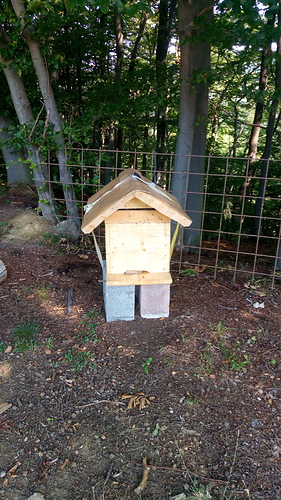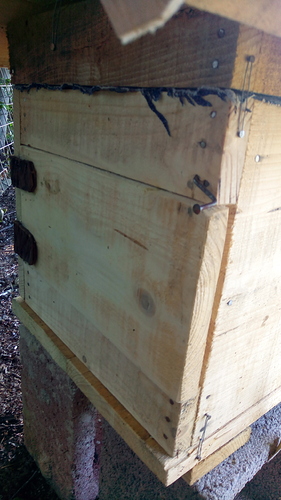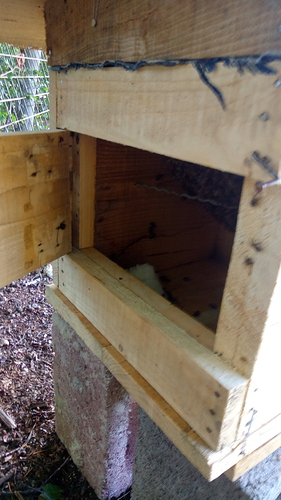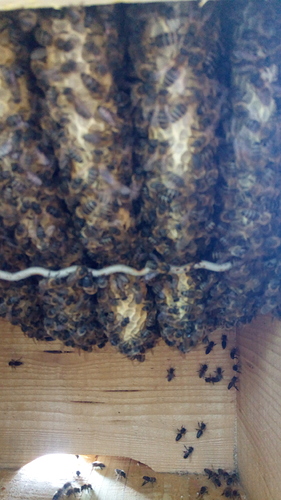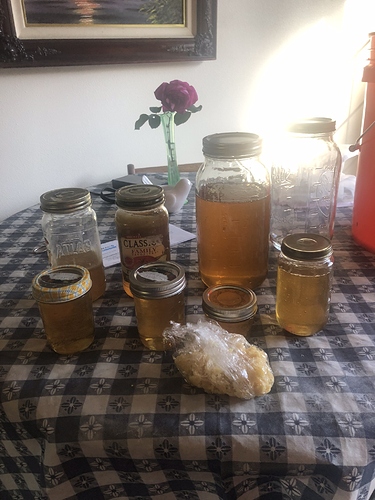Wow, I don’t know who’s busier, you or the bees 
Yes, beautiful stand of white birch!
Pepe
Very nice work Garry, a lot of labor of love work I see there to get some bees establish on your lamd. Great Job! You Will Be Blessed with the work you have done with many generations of bees in the area.
Vob
Thanks all. If there’s a way to make something into a lot of work, I will find the path… ![]()
I do have lots of paper birch growing up in the fields and in the forest, but this stand is the other dominant tree, white poplar (trembling aspen, aka woman’s tongue… ![]() ). The bush around the bee yard is overgrown prairie, saskatoons and chokecherries, wild strawberries and raspberries. It’s growing on ancient beach deposits of clean gravel and sand, so it will never make great timber, but fine for firewood.
). The bush around the bee yard is overgrown prairie, saskatoons and chokecherries, wild strawberries and raspberries. It’s growing on ancient beach deposits of clean gravel and sand, so it will never make great timber, but fine for firewood.
I will say, making bee frames is a good use for scrap lumber. I reduced a ridiculous collection of spruce good only for the fire pit into hundreds of dollars worth of frames, and bags of gasifier or TLUD fuel. And a lot of sawdust…
All you guys from the Baltic look for the birch trees and comment HA HA.
And yes I agree it is good gasifier fuel.
Makes nice charcoal too!
I am a little further south but the trees are sort of the same.
Up here we have an invasive norway maple that is pushing the birch out.
Southern hardwoods are moving north very fast.
Oaks,maples and there is another strange one coming in with huge thorns on it. Its a nasty tree I don’t know the name of but once its in your area you can not cut them down fast enough.
It also looks like you have been building an electrified fence to keep the bruins out of your honey too.
I had an existing fenced bee yard from the time of the previous owner. I actually reduced the size considerably, they had about 40 hives in there when I first saw it. But it was too big to maintain, I might want 10 hives once I get set up. Also the perimeter was too close to the bush, I didn’t like the prospects of an aspen falling over the fence. (And the bears having the best buffet of their lives). This being country where I have tooth dents on my doorknobs…
But it is very good honey country.
As for the bush with wicked thorns, that would be hawthorn. The berries can make fair jam. The plant also carries wheat rust, farmers systematically eradicated it. Newer varieties aren’t nearly as susceptible to rust, so it’s not a worry now. It will also flatten front tires on tractors, as I’ve found. Makes great toothpicks and cleaning tools.
It was 27 at noon today in Churchill, famous tourist destination for polar bear watchers. That’s not compatible with permafrost. And 21 at Alert, 84°N on Sunday. We haven’t seen nothing yet compared to the changes coming.
Ya those darn teenagers…
I think they are Honey-Locust.
They grow fast with a medium hardness wood ( does burn nice. )
The whole tree flowers white in the spring ( good for the bees I guess )
Murder if you do not handle the 2 inch long spike branches carefully
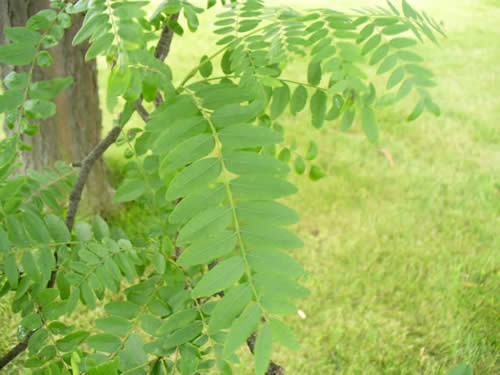
I quite agree.
Heat dome in the forecast for our area.
They say it will be very hot and dry for a few days.
What I like is moderation.
Those poor polar bears.
Did you see that crazy hybrid beluga/narwall in the news?
Then the pod in the St Lawrence that adopted the Narwal?
Its a sign of thinning ice and and mixing that should not happen
Wow, I wouldn’t have imagined honey locust. Isn’t that native to the Carolinian forest? I believe it’s a good wood, but that’s a long way from home.
I have wild grapes growing here that are aspiring to envelop my house now. Their parent stock could only survive in the Assiniboine river valley a good ways to the southeast of here. I also have black walnut growing like they belong here, their parent stock came from Minnesota.
I hadn’t heard about the narwhal stories. Another factor with species translocation like that is sudden changes in food supplies, the food web in the oceans is suddenly greatly changing, thus the right whales showing up in the Saint Lawrence. Now that killer whales are in Hudson’s bay and more of the arctic, those waters aren’t safe for belugas or narwhal, these sightings could be survivors from fragmented pods. Like the periodic reports of polar bears wandering far south, a last desperate act of a starving creature whose habitat has fundamentally changed.
I dont have much experience with honey Locust, but I am a fan of Black Locust. I have planted a bunch of it for fence posts, and it is a very tenacious tree. It thrives in the harshest spots, where even the native drought tolerant species struggle to get established. The thorns are pretty brutal, but at least on the black locust they disappear once the trees get a little bigger. We have locust posts on our vineyard that have been in the soil since 1988. They are still so hard that if you try and nail in a u-staple without pre-drilling, it will deform and fold over after being driven halfway in.
They say you can never get rid of it, but being hemmed in by doug firs, I dont think they will be going anywhere. Also, i have noticed that they seem quite susceptible to Garlon (triclopyr).
This stuff grows here too. People hate it but l can not see why. Along with chestnut and limetree its most important nectar sorce all summer for bees and like Carl sayd, great pole wood. Eradication is simple. Cut to the ground then fence goats in the area. They absolutely love the stuff.
There is a big difference between honey locust and black locust trees. Black is very hard and rot resistant. Honey not at all. We have both, but mostly honey. They are leguminous so they set nitrogen in pastures. But then you deal with thorns. If you bull doze them, they will sprout 10,000 little trees. Goats or roundup is all that is left to kill them.
I’ll put this on the beekeeping instead of the wood supply topic.
Washington hawthorn is considered a mid-spring pollinator here for it white flowers. The red wintering over berry’s make this another widely birds spread “invasive” on our properties. One will become many. Medium length, but nasty sharp thorns.
Dense intentionally tight row re-planted makes a great security hedge-fence.
Decent-good rot resistance to the wood.
Regards
Steve unruh
Oh and I forgot until Steve mentioned bees, we also use the lumber from honey locust for bee hive supers and equipment.
It’s a virtuous circle…
Read this just a few minutes ago.
Support your local bee keeper of you never know what your going to get.
looking good! To survive winter, they need to build at least this box full. I think with help of abit of sugar now and then they will manage. About 1/3 built and l alredy see some newborn bees so in a few days they will peak in wax production.
Fantastic!
Keep up the great work!
I got started with a 5 frame nuc in April this year and did my first harvest a few days ago.
I have watched a lot of you tube videos and studied a “beekeeping for dummies” book.
I only harvested 4 frames and got about 3/4 gallon of honey. I left about 8 full frames of honey to see the bees through winter and will provide a lb of pollen during our cool and wet fall and winter.
Yesterday we were sitting on the porch, the whole family. Don’t do enough of that any more. But with the shutdown it’s been more possible.
Anyway, were having a meeting and looked out and saw a huge cloud of bees above the bee yard. Luke ran out there to check it out and found a wild swarm attempting to invade one of his weaker hives. So he blocked the entrance with some weeds and forced the swarm to cluster and beard on a plum tree in the garden. It happened in about 5 minutess. I have a really good video of Jesse and Luke without gear capturing the swarm and putting it in a hive. But it would take forever to uplaod the way internet is nowadays. The pics I have aren’t really good, but you can see some of the bes around Luke’s head
Anyway, They got it and it’s still there today.

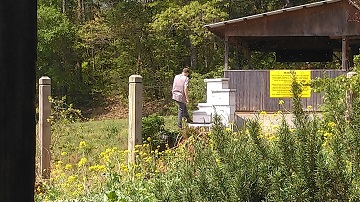
Plese upload when you can Billy l am wery interasted.
Been planing to do a update on my bees for a while allso…
How are Lukes bees doing? Is no treet still working out for him?
